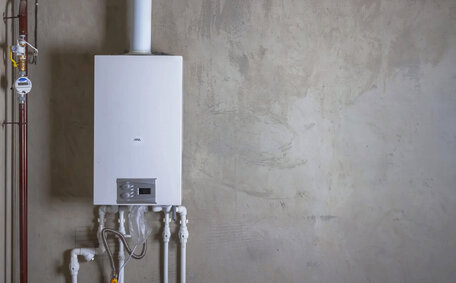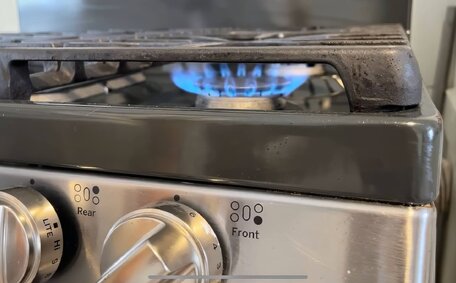Warning Signs That Tree Roots Have Invaded Your Pipes
- Slow drainage or complete blockage across various fixtures often signifies obstructed pipes.
- Gurgling noises from drain pipes are a telltale sign of obstruction.
- Foul sewage odours near or within your home signify potential blockage in the sewer system.
- Blocked drainage observed in inspection openings often points to tree root interference.
- Cracks or leaks near pipe fittings and joints suggest plumbing damage.
- Regular backups in sewer lines can be attributed to tree root intrusions causing notable disruption.
- An unusually high water bill can indicate leaks in the water pipe system, hinting at compromised sewer lines and potential financial strain.
- An aggressive root system that damages water pipes signifies compromised underground water infrastructure.
These warning signs indicate a high risk of tree root invasion in your drainage system, potentially causing significant plumbing damage. It’s essential to understand how tree roots can affect your plumbing and to seek professional help immediately if these signs appear. For prompt and expert intervention, contact Glenhaven Plumbing.
Preventing Tree Root Damage
Steps To Prevent Tree Root Damage
Unchecked tree roots can severely damage your pipes. To prevent blockages and protect your piping, consider these preventative measures:
- Install root barriers by susceptible drain pipes to defend against tree root intrusions.
- Opt for PVC or copper piping, which resists root infiltration more effectively than clay or concrete pipes.
- Periodically use baking soda, boiling water, and substances like copper sulphate or rock salt as deterrents against tree root intrusion.
- Annually prune problematic trees to manage root growth and protect the sewer system.
- Engage an arborist to evaluate tree roots on your property that may pose a risk to plumbing and advise tree removal if necessary.
- Apply enzyme-based root killer treatments around exterior drainage areas to hinder root growth.
- Schedule biennial pipe inspections using CCTV cameras to identify and address root infiltrations promptly.
Preventative measures are key to averting drain damage and blockages from invasive tree roots. Consult with a local professional plumber for tailored advice on protecting your main sewer pipes.
Removing Existing Tree Roots
Effective Methods For Removing Tree Roots in Plumbing
If left to grow unchecked, it becomes essential to remove tree roots that can cause extensive damage to pipes and drains. Removing established roots from drains requires professional equipment and methods as mishandling can lead to further harm to your plumbing system. Here are the main options to address tree roots your pipes invasions:
Mechanical Root Cutting
High-pressure water jetters exceeding 5000 PSI are effective in cutting through roots within blocked drains. Rotational mechanical root cutters shred intrusive roots, allowing water flow to expel debris from the pipes.
Chemical Root Treatment
Applying EPA-approved copper sulphate or metam sodium foams into drains, followed by hot water flushing, eliminates root blockages and deters regrowth. However, this treatment method risks making them susceptible to pipe corrosion with repeated use.
Root Barriers
Strategically positioned impermeable root barriers around drainage pipes can inhibit future root intrusions.
Pipe Bursting / Relining
Root-ravaged drain lines, particularly those with damage-prone clay pipes, may require replacement. Trenchless pipe bursting installs new PVC pipes by breaking up old clay or concrete lines from the inside. Epoxy pipe relining also seals pipes to deny root access.
Expert intervention is required to remove tree roots from pipes and prevent collateral damage. Contact Glenhaven Plumbing, your Gold Coast experts, to arrange an on-site evaluation. Our team can recommend the most effective strategy for addressing tree root invasion in your sewer pipes, informed by comprehensive CCTV drain assessments.
Repairing Pipe Damage from Tree Roots
Once our team has effectively worked to clear tree roots from underground pipes, addressing any resulting damage is crucial for restoring your tankless water sewer function. There are several effective repair solutions Glenhaven Plumbing can provide:
Pipe Relining
Epoxy pipe relining reinforces your home’s pipeline with a strong, watertight layer. After roots are removed, we insert flexible epoxy lining that adheres to pipes, sealing cracks and holes caused by roots sewer line incursions. Relined pipes are restored to flow capacity and reinforced against future root damage.
Spot Repairs
We can patch isolated sections of pipework caused by tree roots infiltration with secure coupling fittings. This targeted repair method preserves unaffected piping.
Full Pipe Replacement
Beyond salvage, completely replacing pipes and drains where tree roots get entrenched may be needed. We’ll install new PVC or copper pipes resistant to future root infiltration. Though invasive, full replacement eliminates root risks systemwide.
Glenhaven Plumbing has the expertise to determine the most suitable pipe repair strategy after tree root extractions. Whether epoxy relining existing pipes or full replacement, we can restore functionality and upgrade root defences.
Contact our team today to assess your sewage pipe repairs required due to tree root damage.
Choosing Sewer-Safe Landscaping
Careful plant choices can reflect consideration of sewer line safety and guide root growth away from pipelines. When planting near your sewer infrastructure, select tree species with fibrous non-invasive root systems that grow downwards rather than outwards. Some examples include:
- Japanese Maple
- Dogwood
- Redbud
- Serviceberry
- Japanese Snowbell
Avoid fast-growing trees like willows, poplars and elms which produce thick, aggressive roots prone to cracking pipes. Check mature size too, planting smaller trees like crape myrtles and magnolias closer to plumbing.
When you plant trees, strategically position them at least 3 metres away from your sewer line, allowing room for safe downward root growth. For new builds, consider rerouting pipes away from landscaping during construction.
Other sewer-safe practises include:
- Install durable root barriers to protect underground plumbing.
- Applying mulch to discourage surface rooting
- Prune lower branches to inhibit root shoot development.
- Using enzyme treatments to stunt root growth
With informed choices in planting new trees and vigilant property maintenance, root damage your drainage system can be thwarted without sacrificing garden beauty.
For advice tailored to your block, contact the arboriculture specialists at Glenhaven Plumbing today.
Regular Maintenance to Avoid Future Tree Root Problems
Regular Maintenance To Prevent Future Issues
Preventing tree roots from growing into your pipes is the best long-term strategy. We advise the following ongoing maintenance measures to prevent future pipe damage:
- Annual CCTV drain inspections to identify potential roots drains infiltrations early, before they escalate into blockages.
- Bi-yearly professional hydrojetting to dislodge minor roots pipes invasions and uphold flow capacity.
- Applying root deterrent products around exterior drainage after hydrojetting.
- Pruning invasive tree roots that CCTV finds encroaching on pipes.
- Installing root barriers to block roots from burrowing into pipe systems when replacing drainage pipes.
- Selecting small-rooted, sewer-safe trees and plants when landscaping.
Glenhaven Plumbing designs custom maintenance strategies, merging CCTV, hydrojetting, and root deterrent applications to shield against future root damage. Contact us today to schedule an on-site consultation and design a proactive maintenance programme for your plumbing system.
Regular inspections and early intervention in minor root issues can prevent expensive repairs and preserve drainage integrity.





